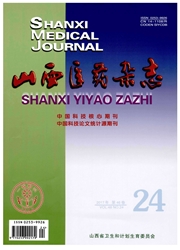

 中文摘要:
中文摘要:
目的 将新型自杀基因——酿酒酵母菌胞嘧啶脱氨酶基因(YCD)导入人T淋巴细胞,在体外证明YCD自杀基因体系的有效性,为自杀基因应用于体内防治移植物抗宿主病(GVHD)提供了理论基础。方法利用脂质体法转染包装细胞293T,分离、培养人外周血单个核细胞,病毒上清转染活化后的人T细胞,应用Puromycin筛选扩增,利用反转录-聚合酶链反应(RT-PCR)技术检测目的基因的表达,酶联免疫吸附试验(ELISA)方法检测细胞因子的分泌情况,噻唑蓝(MTT)法检测其对前体药物的敏感性。结果通过高速离心富集RV、CH-296包被+离心感染法等,对经高效扩增的人T淋巴细胞基因感染率可达38.2%。RT-PCR可检测到转基因T-YCD细胞中YCD基因的表达,筛选出的转基因T淋巴细胞的细胞因子分泌无显著变化。体外实验证实转基因T淋巴细胞可被前体药物5氟胞嘧啶(5-FC)显著杀伤。结论利用pMSCV-YCD-Puro载体,可将YCD基因高效导入人T淋巴细胞,快速筛选出阳性细胞;转基因T淋巴细胞的细胞因子分泌功能未受显著影响,在体外证实导入YCD的转基因T淋巴细胞可被5-FC有效杀伤。
 英文摘要:
英文摘要:
Objective To transfer YCD into human T cells, and to determine if the novel suicide gene system does work in vitro. Methods High-titer RV was got by using the liposome-mediated method. The T lymphocytes were infected with concentrated virus containing the suicide gene. The expression of the YCD gene was detected by RT-PCR. ELISA method and MTT analysis were used to detect the functions of cytokine secretion and the cytotoxic effects of theYCD/5-FC system respectively. Results Combined with concentrated RV by high-speed centrifugation at the speed of 20 000g×4h, the fibronectin fragment CH-296 coating and centrifugation infection, the efficiency of RV transfection reached 38.2% of human T cells. The integration of YCD was detected in transgeneic T-YCD cells by RT-PCR. The system worked well in vitro. The YCD gene modification did not changed the abilities of cytokine secretion. T-YCD can be killed by 5-FC in vitro. Conclusion We well established the protocol of introducing foreign genes by RV into human T cell. Human T cells were efficiently transfected by using the pMSCV-YCD-Puro vector. YCD/5-FC system worked well in vitro, gene modification did not change immunological functions of human T cells.
 同期刊论文项目
同期刊论文项目
 同项目期刊论文
同项目期刊论文
 期刊信息
期刊信息
